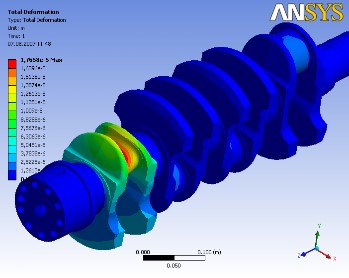Formatting requirements for the “Material and Mechanical Engineering Technology” article
Title of the article
Name Surname1, Name Surname2
1Title of the institution, country
2Title of the institution, country
Abstract. The following structure of the manuscript is required: abstract, keywords, introduction, main text, results, conclusions, acknowledgements, references. Manuscript should be one column 210 × 247 mm format (page size is A4), Microsoft Word 2007 or higher is preferred. Margins: top 20 mm, bottom 20 mm, left 30 mm, right 15 mm.
The Abstract should not exceed 250 words. The Abstract Font: Times New Roman, Font size: 10 italic type.
The Abstract should state the main objectives and scope of the research, as well as the methodology used. It should summarize the results and formulate the main conclusions. Avoid referring to figures or bibliography in the abstract. About 5 to 6 important keywords should follow the abstract to help indexing.
Keywords: in lowercase letters, are separated, by, commas, and ends with a dot.
1. Introduction
Main text Font: Times New Roman, Font size: 10, Font style: Regular, Paragraph Justified and first line indented by 10 mm. For other formatting parameters please refer to Table 1.
Headers of the sections must be numbered (except abstract, keywords, nomenclature, acknowledgements, references).
Authors should NOT use page or section breaks in the document of the article.
2. Main text
The main text should consists of:
- methods;
- experiment;
- results.
The Methods section details the theoretical or experimental methods used.
The Experimental section should provide details of the experimental set-up and the methods used to obtain the results. To make this section interesting, explain the choices you made in your experimental procedure. The Methods and Experimental part may be combined.
The Results section should clearly and concisely present the data, using figures and tables where appropriate. State the message of each paragraph upfront: Convey in the first sentence what you want readers to remember from the paragraph as a whole. Then develop your message in the remainder of the paragraph, including only that information (figures and tables) you think you need to convince your audience.
2.1. Tables
Caption of the table must start with table number 9 pt Bold as “Table 1 -” Arial Narrow. Table caption must be placed above the table in the center.
Table 1 - Basic size and style requirements
|
Text location |
Font |
Font size |
Font style |
Example |
|
Title of the article |
Times New Roman |
12 pt |
Bold |
|
|
Main text |
Times New Roman |
10 pt |
Regular |
|
|
Headings |
Times New Roman |
10 pt |
Bold |
1. |
|
Table Caption |
Arial Narrow |
9 pt |
Regular |
Table 1 - |
|
Table Content |
Times New Roman |
9 pt |
Regular |
|
|
Figure Caption |
Arial Narrow |
9 pt |
Bold. Regular |
Fig.1 - |
|
Formulas |
Cambria math or Times New Roman |
10 pt |
Italic |
(1) |
|
References |
Times New Roman |
9 pt |
Regular |
[1] |
2.2. Figures
Caption of the figure starts with figure number 9 pt Bold as “Fig. 1. - Caption of the figure”. Figure caption must be below the figure.
Figures should be clearly executed in modern graphics programs. Figures should have any common format, e.g. TIFF, BMP, GIF or JPG, PDF. Please do not use print screens. There must be no separate graphical elements (text boxes, arrows, line segments, etc.) on the figure. Text in the figure should be not too small.

Fig. 1. - Topological optimization of the construction of heat exchange equipment
2.3. Formulas
Formulas should be located in the center of the page. The number of the formula must be indicated at the end of the line:
Formulas are preferred to be written in Microsoft Office 2007 or higher Equation Editor. If that is not possible, use MathType. The following style is required: Italic.
Example:
 (1)
(1)
where Vdet is the linear speed of rotation of the workpiece circle points;
T is the indenter oscillations period equal.
It is necessary to clarify the symbols used in the formulas. It is important to ensure that all notations in text and figures must be of the same style.
3. Conclusions
A Conclusions section should present one or more conclusions drawn from the results and subsequent discussion. It should state the most important outcome of your work. This should not duplicate the Abstract.
4. Acknowledgements
Acknowledgement (optional) of collaboration or preparation assistance may be included. Please note the source of funding for the research.
5. References
Each reference is to be referred to in the text by a number enclosed in a square bracket (i.e. [1] or [2] to [5] for more references; do not combine more than 3 references, explain each).
References must be numbered and ordered according to where they are first mentioned in the paper, not alphabetically. All references must be complete and accurate. For non-English reference citation in the English language is required. No article, journal, or etc. title abbreviations are allowed! References style: Times New Roman, 9 pt Regular.
Example:
[1] Donald R. Askeland. The Science and Engineering of Materials. Stamford: Cengage Learning, 2011. – 921 p.
[2] Gavrilin A.N., Moyzes B.B., Zharkevich O.M. Constructive and processing methods of reducing vibration level of the metalworking machinery elements. //Journal of Vibroengineering, Vol. 17, Issue 7, 2015. - p. 3495-3504.